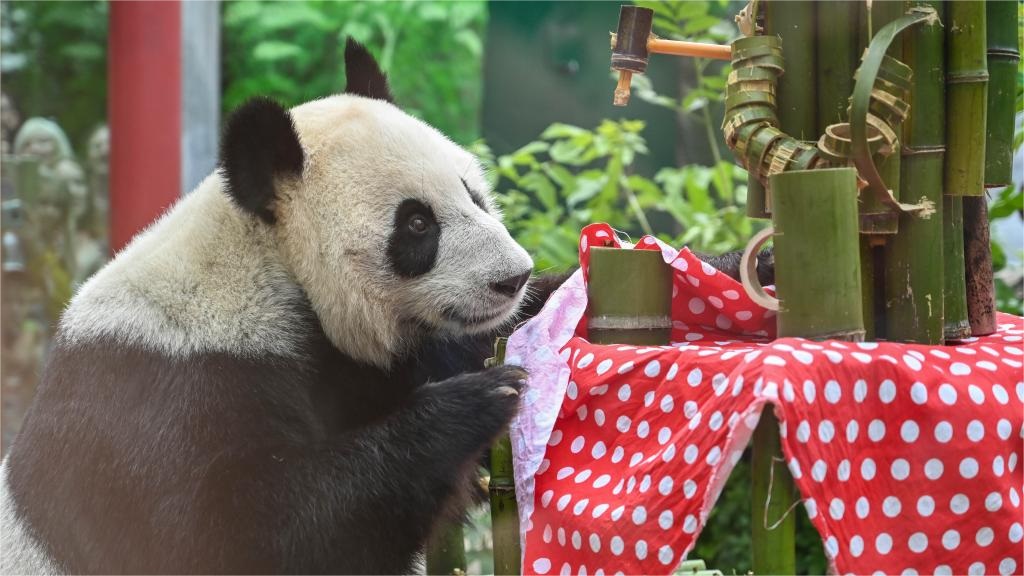Sheep tasked with protecting solar panels in NW China’s Qinghai Province
A gentle breeze caresses the summer landscape of Gonghe county, Hainan Tibetan Autonomous Prefecture, northwest China’s Qinghai Province. Local herdsman Yehdor carries a water bottle and some tasmba, a local bread, as he watches over his sheep as they roam and graze.
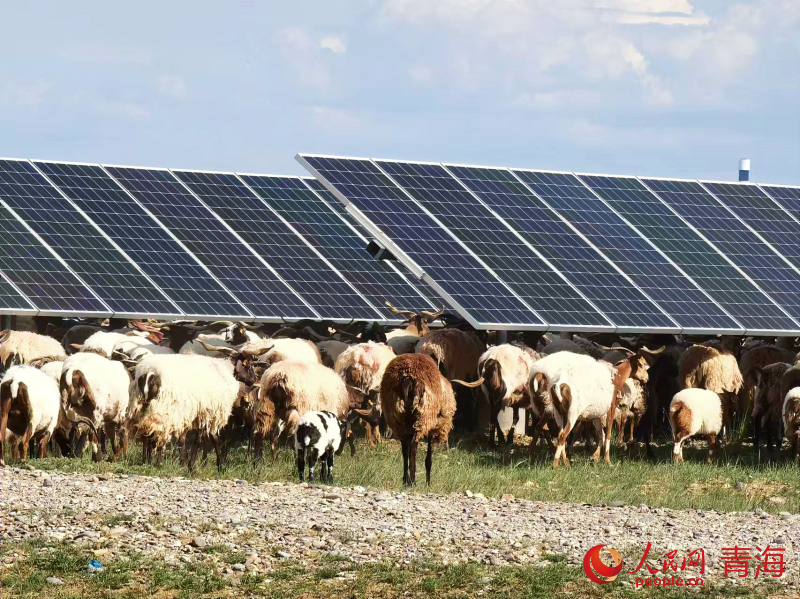
Sheep graze on fresh grass under solar panels at a photovoltaic industrial park in Gonghe county, Hainan Tibetan Autonomous Prefecture, northwest China’s Qinghai Province. (People’s Daily Online/Ma Kexin)
Making the scene unique is the blue sea of solar panels overhead, as the herd’s grazing grounds are a photovoltaic (PV) industrial park.
“My family raises 300 sheep in the PV industrial park,” said Yehdor with a big smile.
The Talatan PV industrial park covers a total area of 609 square kilometers, making it the largest of its kind in the world. In the past, 98.5 percent of the Talatan area was covered by sand. The flat land enjoys rich solar energy resources, with an average annual sunshine duration of nearly 3,000 hours.
The immense size and power production of the plant has allowed it to send electricity to provinces like Henan and Jiangsu.
The PV park also acts as both sun screen and a wind breaker for the surrounding land. With average wind speeds in the area being reduced by 50 percent, vegetation coverage in the area has grown to 80 percent.
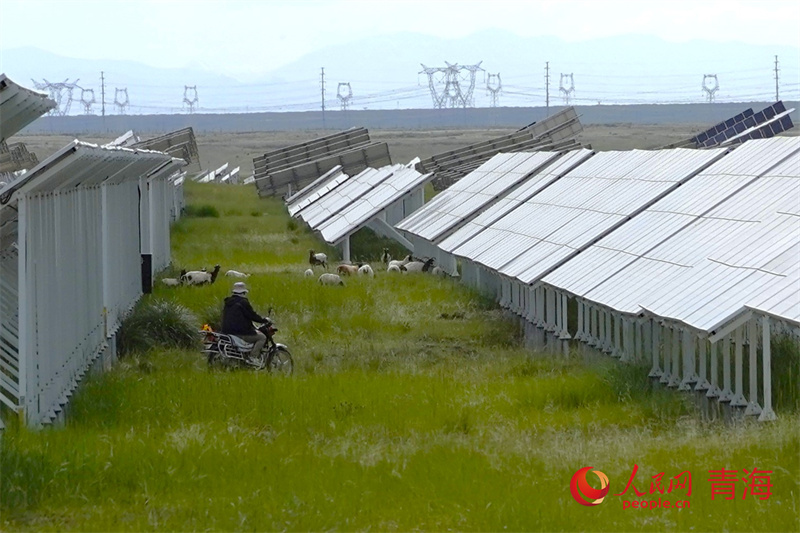
A herder riding a motorbike tends his sheep at a photovoltaic industrial park in Gonghe county, Hainan Tibetan Autonomous Prefecture, northwest China’s Qinghai Province. (People’s Daily Online/Gan Haiqiong)
However, this vegetation growth hasn’t been without issues. The growing grass can hamper the efficiency of the panels, and it can also act as a fire hazard in winter months as the grass dries out.
Rather than using ecologically unfriendly solutions to the vegetation problem like herbicides and mowers, the park invited villagers to raise their sheep under the solar panels, bringing both ecological and economic benefits.
The sheep’s grazing keeps the vegetation at bay, while saving the herders time and money in finding other pastures or methods to feed them. In addition, the sheep naturally fertilize the area, allowing for a green ecological chain to form. Finally, herders can decide to sell some of their sheep, bringing great financial benefits.
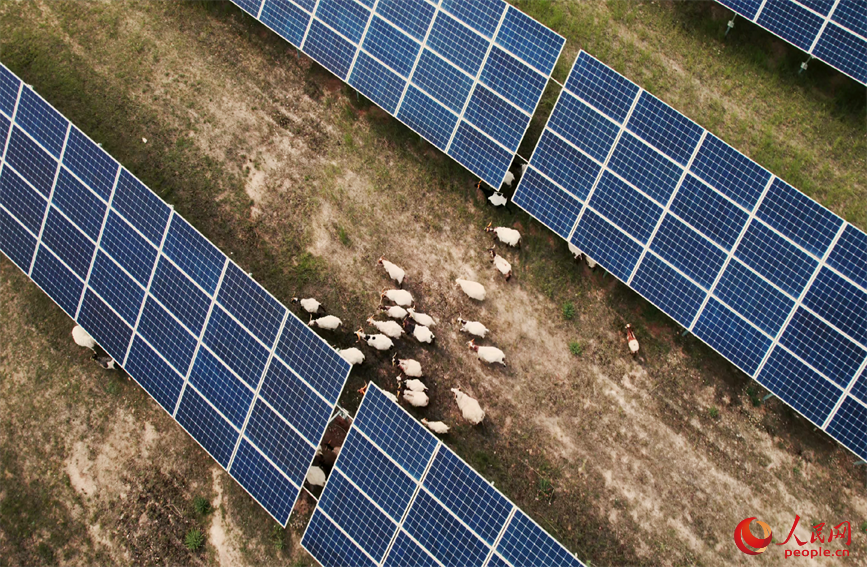
Sheep roam at a photovoltaic industrial park in Gonghe county, Hainan Tibetan Autonomous Prefecture, northwest China’s Qinghai Province. (People’s Daily Online/Ma Tianyi)
In 2021, 600 sheep were tasked with protecting the solar panels in the park. Yehdor said after raising sheep in the park, his family’s annual income has increased from over 20,000 yuan ($2,762.97) to 70,000 to 80,000 yuan.
Currently, 12 eco-ranches have been built in the park. Each sheep wears an ear tag, which is like an ID card for the sheep. “People can obtain the identification information of a sheep, including age, its owner, and immunization, by scanning its ear tag,” said Yehdor.
The PV industrial park is an example of how industrial development, traditional practices, and environmental protection can work hand in hand. The area is able to produce more power while improving the environment and even maintaining and elevating the local’s traditional way of life. Overall, it’s a win-win solution for all.
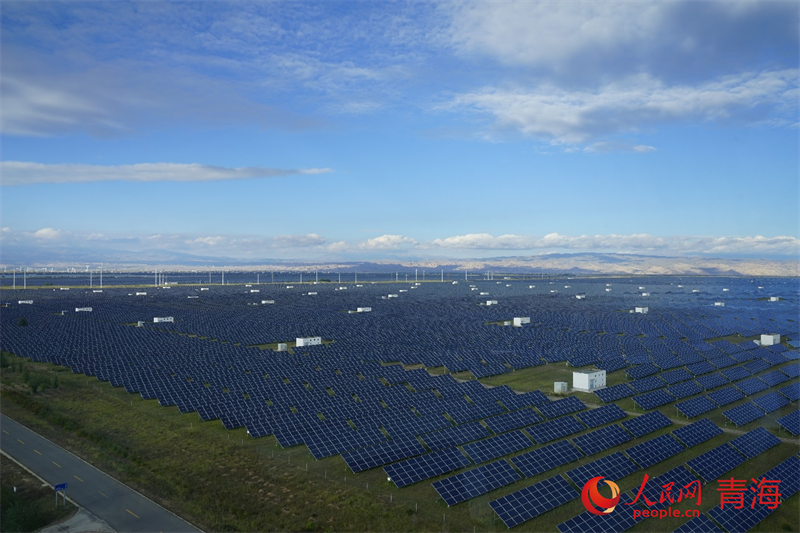
Photo shows a photovoltaic industrial park in Gonghe county, Hainan Tibetan Autonomous Prefecture, northwest China’s Qinghai Province. (People’s Daily Online/Ma Kexin)
Photos
Related Stories
- China builds "Solar Panel Great Wall" in Kubuqi Desert
- Interview: China's PV efforts propel European decarbonization, says Intersolar Europe organizer
- PV industry creates win-win ecological, economic benefits in desert
- New highlights of China's largest desert control PV project in Inner Mongolia
- In pics: Water-surface PV project in E China's Jiangxi
Copyright © 2024 People's Daily Online. All Rights Reserved.









